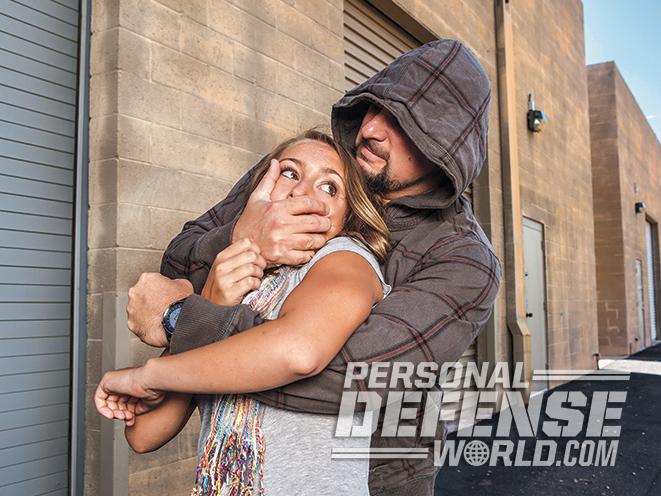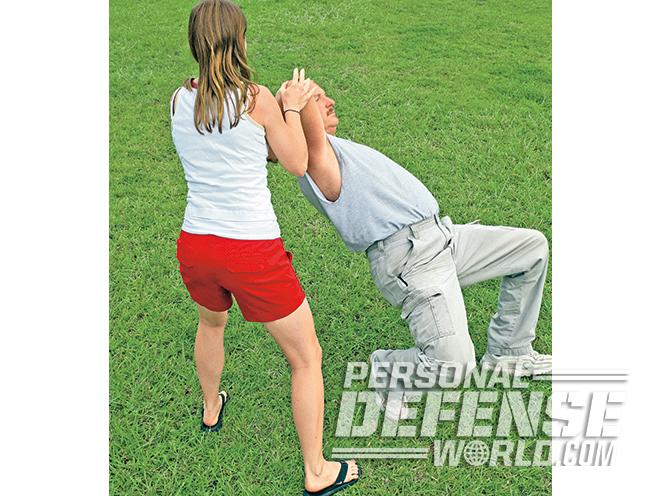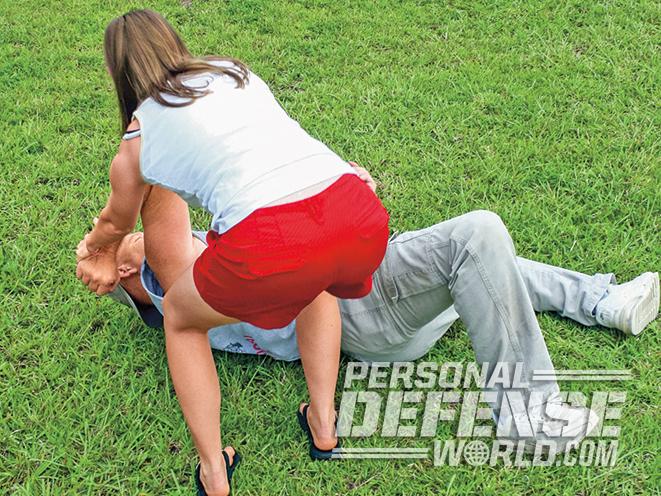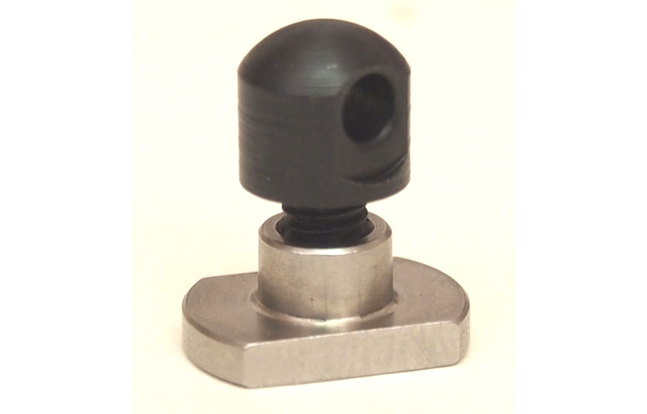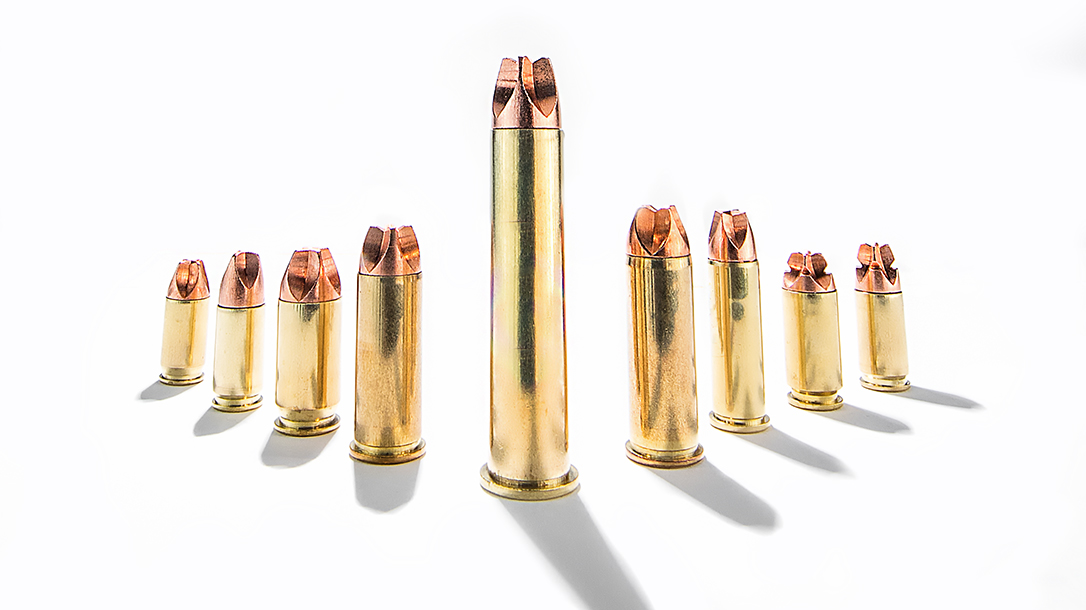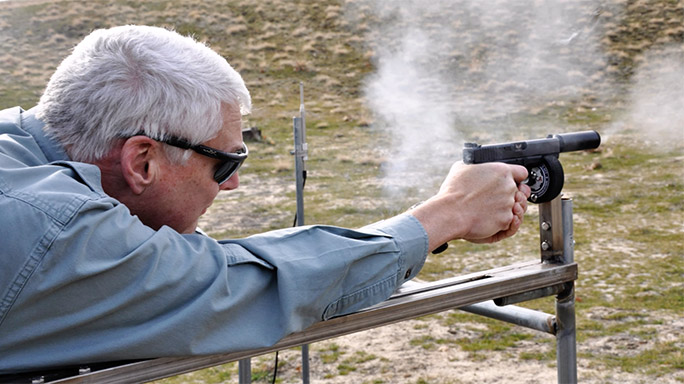A choke that begins from the rear with an arm around your neck can take many forms. It might be a bar-arm strangle, in which the assailant’s forearm crushes your larynx and trachea. If you have a skilled opponent, it might be the move judo practitioners call shime-waza and fans of WWF wrestling know as “the sleeper hold.” This means that the bicep on one side and forearm on the other will crush in a “V” pattern into your neck, blocking the carotid arteries that bring oxygenated blood to your brain, and simultaneously occluding the jugular veins that carry depleted blood back down to the heart. Unconsciousness will occur somewhere between right now and 14 or so seconds, and the sudden blood pressure change can result in your going into convulsions or even experiencing a stroke. Either attack can be deadly and knowing how to get out of a rear choke hold is an important, life-saving skill.
This is an extremely common street attack. New York City thugs used to call it “fiending.” In other areas it’s known as “the mugger’s lock” or “the mugger’s yoke.” Male bullies use it instinctively it seems against smaller men, while rapists often use it against females. It’s critical to know how to get out of a rear choke hold instantly if you ever encounter it because it can happen too fast to figure it out when the moment comes. The technique is from one of the great masters of our time, Soke Takayuki Kubota, 30 or more years ago. It’s strong, simple and it works. It’s based on leverage.
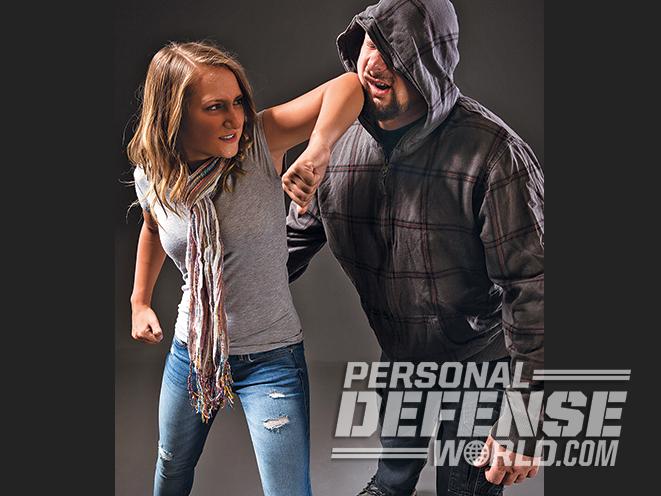
How to Get Out of a Rear Choke Hold Step-By-Step
Step 1: Dig in Your Chin
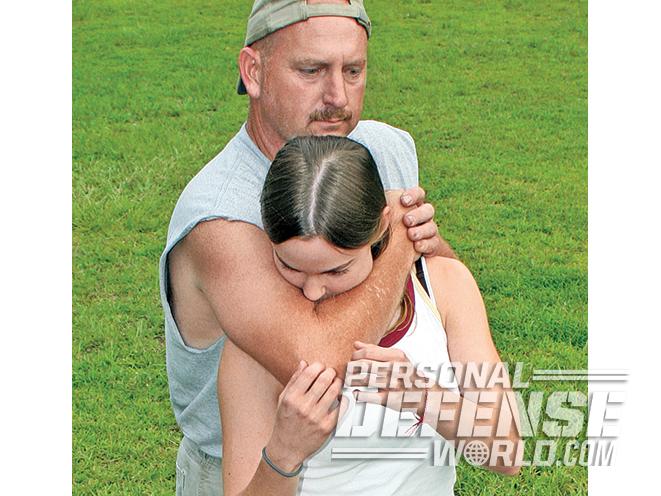
As the arm snakes around your neck by surprise, the first thing to do is bury your chin deep in the crook of the attacker’s elbow. This will protect the throat, and it will drive your lower mandible down low enough that the crushing pressure that might have occluded the great vessels in your neck will now squeeze harmlessly against hard bone. That will hurt, but it will not injure.
Your priority isn’t putting the bad guy on the ground, though that would be nice afterward. No, your priority is staying alive, and that’s why burying your chin deep down in the crook of his elbow has to be first and foremost. It also buys you time to finish the fight, and if you have to, well, your teeth are right next to that big vein of his that nurses like to take the blood samples from.
RELATED STORY: Tight Fights – Skills & Drills For Close-Quarters Personal Defense
Step 2: Press Your Attacker’s Elbow
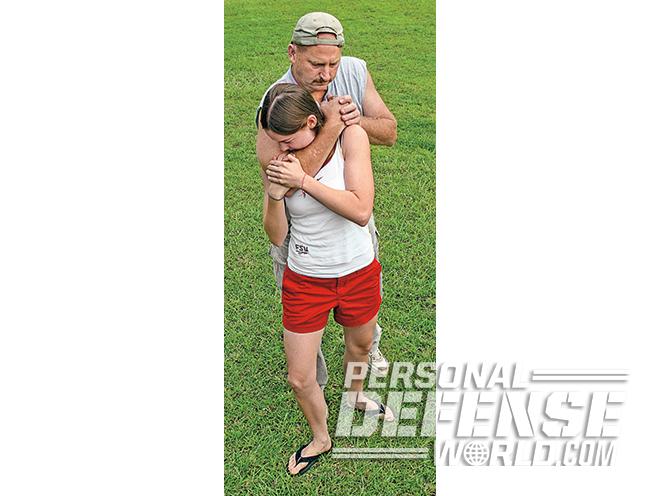
As soon as your chin is safely buried to guard your throat and your great vessels, take both hands and press them on his elbow where it’s bent. Don’t put one hand on one side of his elbow and one on the other side: it distributes the pressure and robs you of focused force. Put one hand where you see in the pictures and the other right on top of it. That will give you more leverage.
Don’t try to pull down. He’s probably stronger than you, or he wouldn’t have picked you as a victim. Instead, press his elbow straight in toward yourself, thus creating a pressure point for leverage.
Step 3: Swing Your Body Towards Your Attacker’s Trapping Arm
Now, swing your whole body forward going in the direction of the offender’s trapping arm. That is, if he’s choking you with his right arm, spin to your right; if he’s choking you from behind with his left arm, pivot to your left.
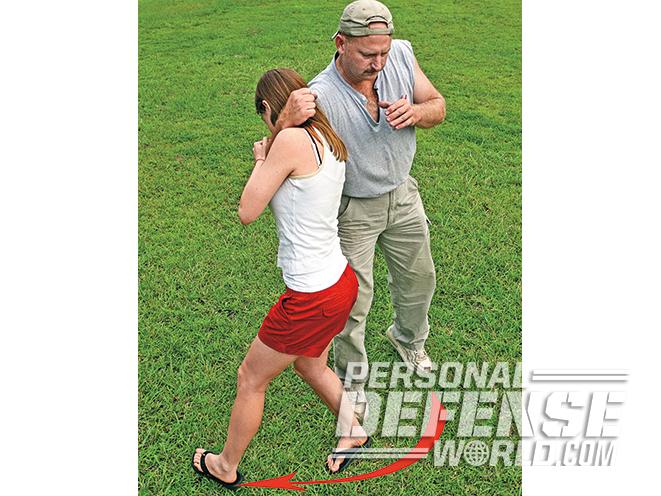
Maintain the inward pressure on his elbow joint as you turn with your whole body. You want to swing your outside leg (your left leg if he has grabbed you with his right arm) all the way out to your right. You want a good, solid 180-degree turn, and 220 degrees is even better. (In a 180-degree pivot, you’ve spun from facing squarely north to squarely south. For a 220-degree pivot, if you’re a shooter, think of starting with your back to the target in an “El Presidente” match with both heels level on the firing line, then pivoting into a Weaver stance to face the targets with your non-dominant leg forward and your gun-hand-side leg to the rear.)
Step 4: Make Your Escape
This movement puts your whole body against just his arm, and particularly your whole body against the trapped elbow joint of his arm. His elbow becomes the hinge of a gate that is his arm, and that gate swings wide open to allow you to escape. Now you’re free of the choke and you have multiple options, but it will go best if you have already decided beforehand what option you’re likely to take.
If you are not a fighter by nature, the best bet may be to simply run. The 180-degree pivot of your rear leg will already have literally given you a running start to do the last thing he expected—running away in a direction straight behind him. As you turn, his arm on that side will still be up and his vulnerable kidney area will be exposed to you. A hammer fist to the kidney, or a strike there with whatever object you might have had in your hand as the assault began, might be appropriate.
If you have other force options, you can get clear of him. Disengage and draw your pepper spray, your gun or whatever defense tool may be appropriate and legal under the circumstances. Or, if you’re trained in grappling as demonstrator Anna Gunter is, you can use your skills to take advantage of his already bent arm and put him on the ground, as shown, in this case with a shoulder lock.
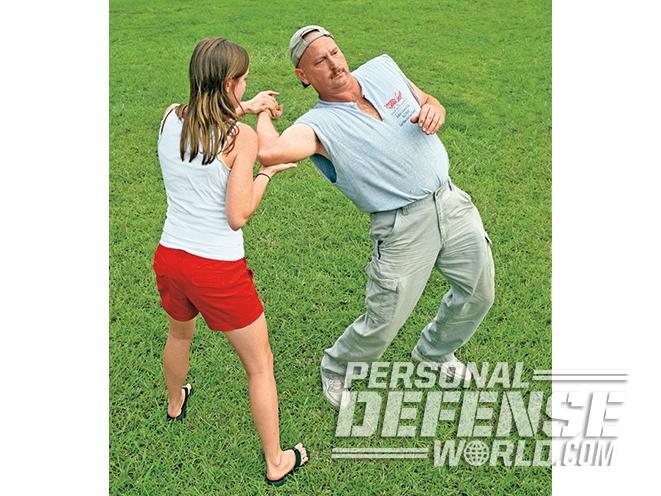
Optional Step 5: Takedown the Attacker
In this optional step, you can choose to finish the fight with a takedown. In the demonstration above, see how the woman has her right hand already in position on the attacker’s elbow. From here, she’ll slide her left hand up to his wrist, pulling his wrist down as her palm pushes his elbow up. Notice how violently her move has taken the attacker backward, off balance.
Look carefully at her right hip and leg. She turns her hip, straightens her leg, and pivots her right hand for more strength against his elbow as she continues to bring her wrist down and her elbow up. He’s going down because if she doesn’t, she’ll tear out the rotator cuff and literally rip his arm out of the socket.
RELATED STORY: Too Close For Comfort – Stalking Warning Signs & Safety Tips
You won’t learn how to escape a rear choke hold or any other hand-to-hand self-defense technique without practice. You need to do it over and over. Use the photos and captions here as general guidelines, and pay attention to the details.










